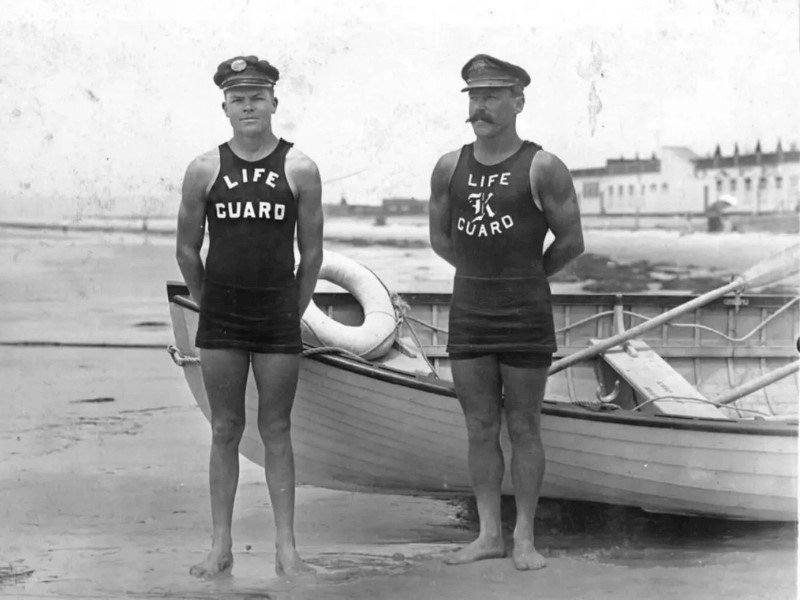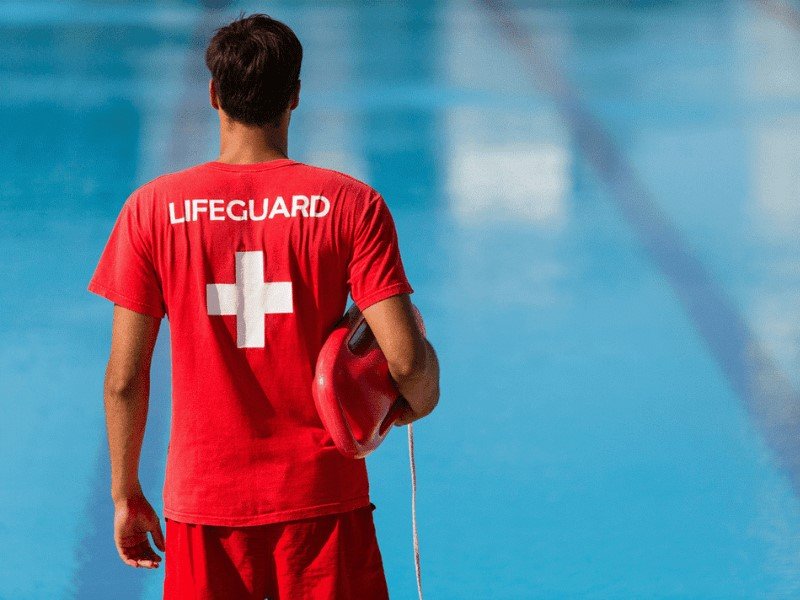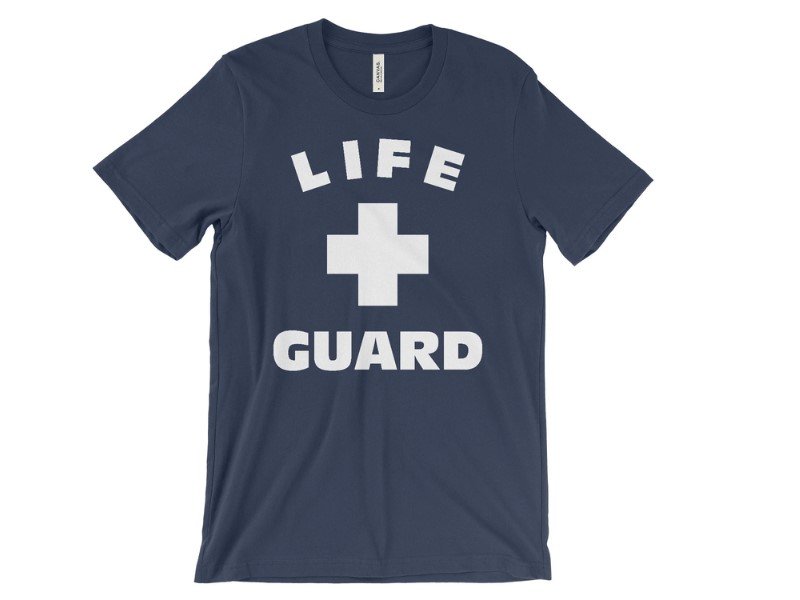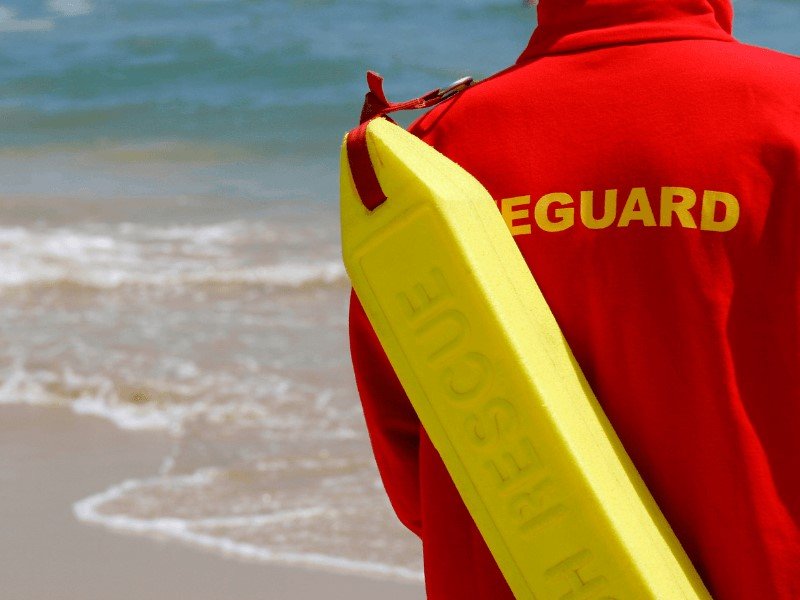People who need help will trust your lifeguard team if you follow an article top design and best trends lifeguard uniform: styles and ideas.

The lifeguard uniform is an essential piece of clothing that ensures safety for swimmers and beachgoers. Over the years, the lifeguard uniform has evolved from a simple one-piece swimsuit to a highly functional and fashionable outfit that incorporates technical features to enhance its functionality.
In this article, we will delve into the top designs and trends in lifeguard uniforms.
1 History of the Lifeguard Uniform
The lifeguard uniform has a rich history that spans over a century. From its early beginnings as a simple bathing suit to its modern-day design, the lifeguard uniform has undergone many changes over the years.
Early Uniforms
The first lifeguards in the United States appeared in the late 1800s and early 1900s. At this time, there were no standardized uniforms for lifeguards, and they often wore simple bathing suits or athletic clothing. The emphasis was on functionality and mobility rather than fashion or style.

The first official uniform for lifeguards appeared in the 1910s. These early uniforms consisted of a one-piece swimsuit with a white canvas jacket, a hat, and a whistle. The white jacket was designed to be highly visible and to identify the lifeguard as someone who was there to protect swimmers.
1930s-1950s
In the 1930s, the lifeguard uniform underwent significant changes. The one-piece swimsuit was replaced with a two-piece swimsuit, and the canvas jacket was replaced with a shirt and shorts. The shirt and shorts were often made from white or blue cotton and featured the word “Lifeguard” or “Beach Patrol” on the back.
In the 1950s, the lifeguard uniform began to incorporate more fashion elements. The shorts became shorter and tighter, and the shirts became more fitted. This was in response to the growing popularity of beach culture and the desire to create a more stylish and fashionable uniform.
1960s-Present Day
In the 1960s, lifeguard uniforms began to incorporate more technical elements. Lifeguards began to wear sunglasses, sunscreen, and other protective gear to protect themselves from the sun and water. The uniform also began to incorporate more functional elements, such as pockets and storage compartments for rescue equipment.

In the 1970s and 1980s, the lifeguard uniform continued to evolve. Lifeguards began to wear brightly colored uniforms to increase their visibility, and the use of reflective tape and other visibility-enhancing features became more common.
Today, lifeguard uniforms are designed to be functional, practical, and fashionable. They are made from high-quality materials that provide protection from the sun and water, and they often feature bright colors and reflective tape to increase visibility. Modern lifeguard uniforms also often incorporate more technical features, such as built-in rescue equipment and communication devices.
The history of the lifeguard uniform is a fascinating one that spans over a century. From its early beginnings as a simple bathing suit to its modern-day design, the lifeguard uniform has evolved to become a functional, practical, and fashionable symbol of safety and protection on beaches and in pools across the world.
2 Why Do Your Employees Need to Wear the Lifeguard Uniform?
When it comes to working as a lifeguard, wearing the appropriate uniform is a crucial component of the job. The uniform serves many purposes beyond simply identifying the lifeguard as someone who is there to protect swimmers and beachgoers.

Identification
One of the primary reasons lifeguards need to wear a uniform is to identify themselves to the public. A uniform helps to distinguish the lifeguard from other people on the beach or at the pool. This is especially important in emergency situations where a lifeguard needs to be quickly identified and located.

Professionalism
Wearing a lifeguard uniform conveys a sense of professionalism and authority. It lets people know that the lifeguard is a trained and qualified professional who takes their job seriously. A uniform can help to build trust and respect between the lifeguard and the public.

Safety
Wearing a lifeguard uniform is also important for the lifeguard’s safety. The uniform is designed to provide protection from the elements, including the sun and water.
For example, lifeguard uniforms often include a hat and sunglasses to protect the lifeguard’s eyes from the sun’s glare. Additionally, some uniforms may feature a rash guard or wetsuit to protect the lifeguard from the harmful effects of the sun and the cold water.

Visibility
A lifeguard uniform is designed to be highly visible, making it easier for the lifeguard to be seen by the public. This is especially important in crowded or busy areas, where it may be difficult to locate the lifeguard.
A uniform that features bright colors, reflective tape, or other visibility-enhancing features can help to increase the lifeguard’s visibility and ensure that they are easily seen by those in need of assistance.

Compliance
In some cases, wearing a lifeguard uniform may be required by law or regulation. For example, some states and municipalities have specific uniform requirements for lifeguards. Wearing a uniform ensures that lifeguards are in compliance with any regulations or requirements that may be in place.
There are many reasons why your employees need to wear a lifeguard uniform. The uniform serves as a means of identification, conveys professionalism, provides protection from the elements, increases visibility, and ensures compliance with any regulations or requirements that may be in place.

Investing in high-quality, functional, and professional-looking lifeguard uniforms is an important aspect of creating a safe and secure environment for swimmers and beachgoers.
3 Top Design and Best Trends Lifeguard Uniform: Styles and Ideas
Lifeguards are responsible for ensuring the safety of people in aquatic environments, and their uniforms are an essential part of their job. A well-designed and well-fitted lifeguard uniform not only provides protection from the elements but also helps to identify the lifeguard as an authority figure.

Classic lifeguard uniform
The classic lifeguard uniform is a traditional design that has been in use for many years. It is a simple and professional uniform, featuring a red and white color scheme.
The uniform consists of a white button-up shirt, red shorts, and red sandals. The uniform can be accessorized with a red whistle and a rescue can. The classic lifeguard uniform is a staple in the industry, providing a professional and functional look.

Modern Lifeguard Uniform
The modern lifeguard uniform takes inspiration from current fashion trends, offering a stylish and comfortable look. It comes in a variety of colors and styles and is often made of moisture-wicking fabric that helps to keep the lifeguard cool and comfortable while working.
Modern lifeguard uniforms can feature bold colors, patterns, and prints, creating a unique and personalized look. They are often accessorized with hats, sunglasses, and a lightweight rescue tube.

Athletic-Inspired Lifeguard Uniform
The athletic-inspired lifeguard uniform is designed to be both comfortable and stylish. The uniform is made from moisture-wicking fabric that helps to keep the lifeguard cool and dry.
It often features a sporty design with bold colors and patterns, creating a dynamic and energetic look. The uniform can be accessorized with a hat, sneakers, and a lightweight rescue tube.

Surf Lifeguard Uniform
The surf lifeguard uniform is designed specifically for lifeguards who work on the beach. The uniform often features a rash guard or wetsuit, paired with shorts or boardshorts.
The uniform can be accessorized with a surfboard or paddleboard and a rescue buoy. The surf lifeguard uniform is designed to withstand the elements, providing protection from the sun, wind, and water.

Custom lifeguard uniform
A custom lifeguard uniform is designed to meet the specific needs of a lifeguard, offering a personalized and unique look. The uniform can be tailored to fit the lifeguard’s body type and personal style, providing a comfortable and functional look.
Custom lifeguard uniforms can be designed to incorporate the lifeguard’s favorite colors, patterns, and fabrics, creating a one-of-a-kind look. They can be accessorized with custom hats, sunglasses, and rescue equipment that complement the overall look, providing a complete and stylish appearance.

Bright colors and bold prints
One of the top trends in lifeguard uniforms is the use of bright colors and bold prints. These vibrant colors and prints make lifeguards highly visible, which is critical on crowded beaches or pools.
Some of the popular colors include red, yellow, orange, and blue. These colors are easily recognizable from a distance and are used to signal danger or safety to swimmers.
Along with bright colors, bold prints are also in style. Prints such as stripes, chevrons, and geometric patterns are popular among lifeguard uniform designers. These prints not only add a fashion element to the uniform but also help enhance visibility.

Technical Features
Modern lifeguard uniforms incorporate a range of technical features that make them highly functional. Some of the popular features include:
- Rescue equipment pockets: These pockets are designed to hold rescue equipment such as rescue tubes, life vests, and first aid kits. This allows the lifeguard to quickly access the equipment in case of an emergency.
- Communication devices: communication devices such as two-way radios or whistles are essential in emergencies. They help lifeguards quickly communicate with each other or signal to swimmers.
- Sun protection: lifeguards are often exposed to the sun for extended periods. As such, modern lifeguard uniforms incorporate sun protection features such as UV-resistant fabrics, wide-brimmed hats, and sunglasses.

Functional Design
Lifeguard uniforms need to be functional, practical, and comfortable. A functional design ensures that lifeguards can perform their duties with ease and agility. For example, the uniform must not restrict movement or be too heavy, as this can impede a lifeguard’s ability to respond quickly.

Additionally, the design must be practical, meaning it should have pockets for equipment and other accessories. A well-designed lifeguard uniform can make a huge difference in the lifeguard’s ability to respond to an emergency.
Eco-Friendly Materials
Eco-friendly materials are becoming increasingly popular in lifeguard uniforms. These materials are designed to minimize the impact on the environment while also providing functionality and durability. Sustainable materials such as recycled polyester, organic cotton, and bamboo fibers are commonly used in lifeguard uniforms.
Lifeguard uniforms are an essential part of a lifeguard’s job. The design and style of the uniform should not only be functional but also reflect the lifeguard’s personality and style.

The classic lifeguard uniform, modern lifeguard uniform, athletic-inspired lifeguard uniform, surf lifeguard uniform, and custom lifeguard uniform are all popular styles and ideas that can be considered while designing a lifeguard uniform. A well-designed lifeguard uniform can not only help to identify the lifeguard but also provide protection and comfort while on duty.
4 Conclusion
The lifeguard uniform has come a long way from its early beginnings as a simple one-piece swimsuit. Today, lifeguard uniforms are highly functional, practical, and fashionable.
The top designs and trends in lifeguard uniforms incorporate bright colors, bold prints, technical features, functional design, and eco-friendly materials. As the role of the lifeguard continues to evolve, it’s exciting to see how lifeguard uniforms will continue to adapt to meet their needs.
 Henry Pham (Pham Quang Anh), CEO of DONY Garment
Henry Pham (Pham Quang Anh), CEO of DONY Garment
This year, we have found that many international buyers are seeking new suppliers based in nations outside of China and Thailand to purchase many goods and products, including uniforms, workwear, reusable cloth face mask, and protective clothing.
At DONY Garment, we are proud to welcome international customers, especially those based in the US, Canada, the Middle East, and the EU market to discover the professional production line at our factory in Vietnam.
We guarantee our products are of the highest quality, at an affordable cost, and easy to transport across the world.
 Dony Garment Vietnamese Garment Factory Supplier – Apparel Clothing & Textile Manufactured. Private label clothing Produce women, men, children baby wear – Casual Clothing, Uniform, Workwear
Dony Garment Vietnamese Garment Factory Supplier – Apparel Clothing & Textile Manufactured. Private label clothing Produce women, men, children baby wear – Casual Clothing, Uniform, Workwear


 Henry Pham (Pham Quang Anh), CEO of DONY Garment
Henry Pham (Pham Quang Anh), CEO of DONY Garment



